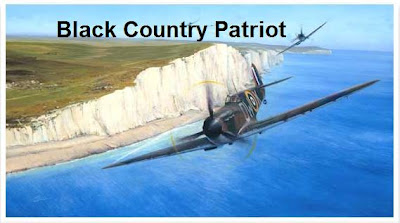Cadburys under pressure

Article from the Evening mail
Cadbury will today discover if it is to be the subject of a hostile takeover approach by Kraft Foods.
The US suiter has until 5pm today to make an offer or walk away until next Easter but it is believed that Cadbury will vociferously resist the approach.
Kraft’s original approach was worth 745 pence per Cadbury share, though the cash-and-stock offer has since declined in value because of a drop in the value of Kraft’s shares which posted weak third quarter results last week - numbers that are believed to have hardened Cadbury’s major shareholders’ resolve to fight off Kraft’s attentions.
Shares in Cadbury have risen about 30 per cent since late August, and are now 758p a share and Cadbury has said the original Kraft offer “fundamentally undervalued” the firm and that it would prefer to remain independent. It is thought that 820p a share would be the minimum starting point for negotiations.
Reports yesterday suggested that Cadbury chairman Roger Carr has met most of the company’s top 50 shareholders in London and New York to persuade them against Kraft’s offer.
Mr Carr previously said in a letter to Kraft chief executive Irene Rosenfeld “Cadbury would be absorbed into Kraft’s low growth, conglomerate business model” and that made the offer is an “unappealing prospect”.
The maker of Dairy Milk reported higher-than expected sales in October for the third quarter and it also raised its forecast for revenue this year to “around the middle” of its previous guidance of 4-6 per cent growth.
As well as Dairy Milk, Cadbury also owns the Green & Black’s chocolate brand, Halls lozenges, Trident and Dentyne gum brands and liquorice allsorts maker Bassett’s.
It spun off its drinks division as a separate business last year.
Kraft’s brands include Kenco and Maxwell House coffee, Oreo biscuits, Jacobs, Terry’s Chocolate Orange and Toblerone, as well as cheese products such as Philadelphia and Dairylea.
Billionaire Warren Buffett, one of the world’s richest men and whose investment firm Berkshire Hathaway is the biggest shareholder in Kraft, has said the Cadbury offer is unlikely to increase significantly.
http://www.birminghammail.net/news/birmingham-news/2009/11/09/kraft-poised-to-make-hostile-bid-for-cadbury-65233-25123408/
History of Cadburys
Cadbury, the global leader in the chocolate confectionery market, began in 1824 when a young Quaker named John Cadbury opened up a shop in Birmingham. John sold coffee, tea, drinking chocolate and cocoa at his shop. Believing that alcohol was a main cause of poverty, John hoped his products might serve as an alternative. He also sold hops and mustard. Like many Quakers John had high quality standards for all of his products.
At that time in England, Quakers were prohibited from attending university, since it was affiliated with the established church, and their pacifist beliefs kept them from joining the military. With few opportunities available, Quakers often went into business-related fields and/or devoted their time to missions of social reform.
By 1842 John was selling 11 kinds of cocoa and 16 kinds of drinking chocolate. Soon John’s brother Benjamin joined the company to form Cadbury Brothers of Birmingham. The Cadbury brothers opened an office in London and received a Royal Warrant (one of many) as manufacturers of chocolate and cocoa to Queen Victoria in 1854. Six years later the brothers dissolved their partnership because of John’s failing health and the death of his wife. They left the business to John's sons George and Richard. John devoted the rest of his life to social work and died in 1889.
Packing room at Cadbury's Bournville factory..
George and Richard continued to expand the product line, and by 1864, they were pulling a profit. Cadbury’s Cocoa Essence, which was advertised as "absolutely pure and therefore best," was an all-natural product made with pure cocoa butter and no starchy ingredients. Cocoa Essence was the beginning of chocolate as we know it today. The brothers soon moved their manufacturing operations to a larger facility four miles south of Birmingham. The factory and area became known as Bournville.
With Cadbury’s continued success in chocolate, George and Richard stopped selling tea in 1873. Master confectioner Frederic Kinchelman was appointed to share his recipe and production secrets with Cadbury workers. This resulted in Cadbury producing chocolate covered nougats, bonbons delices, pistache, caramels, avelines and more. Cadbury manufactured its first milk chocolate in 1897. Two years later the Bournville factory employed 2,600 people and Cadbury was incorporated as a limited company.
During World War I, more than 2,000 of Cadbury’s male employees joined the Armed Forces. Cadbury supported the war effort, sending warm clothing, books and chocolate to the soldiers. Cadbury supplemented the government allowances to the dependants of their workers. When the workers returned, they were able to return to work, take educational courses, and injured or ill employees were looked after in convalescent homes. During this period trade overseas increased, and Cadbury opened its first overseas factory near Hobart, Tasmania. The next year Cadbury merged with JS Fry & Sons, a past market leader in chocolate.
Cadbury supported the war effort during World War II by converting parts of its factory into workrooms to manufacture equipment like milling machines for rifle factories and parts like pilot seats for Defiant fighter planes. Workers plowed football fields to grow crops, and the Cadbury St. John’s Ambulance unit helped people during air raids. Chocolate was considered essential for the Armed Forces and civilians. Rationing finally ended in 1949.
In 1969 Cadbury merged with Schweppes to form Cadbury Schweppes. Schweppes was a well-known British brand that manufactured carbonated mineral water and soft drinks. The merged companies would go on to acquire Sunkist, Canada Dry, Typhoo Tea and more. Schweppes Beverages was created, and the manufacture of Cadbury confectionery brands was licensed to Hershey.
Today Cadbury Schweppes is the largest confectionery company in the world, employing more than 70,000 employees. In 2006 the company had over $15 billion in overall sales. In March of 2007, Cadbury Scheweppes announced that it intends to separate its confectionery and beverage businesses. With almost 200 years in the business, Cadbury Schweppes will continue to prosper in the coming decades.
Cadbury Product Timeline
1865 – Cadbury Cocoa Essence
1875 – Cadbury Easter Eggs
1897 – Cadbury Milk Chocolate
1905 – Cadbury Dairy Milk
1908 – Cadbury Bournville Chocolate
1915 – Cadbury Milk Tray
1920 – Cadbury Flake
1923 – Cadbury Crème Eggs
1929 – Cadbury Crunchie
1938 – Cadbury Roses
1948 – Cadbury Fudge
1968 – Cadbury Picnic
1960 – Cadbury Buttons
1970 – Cadbury Curly Wurly
1983 – Cadbury Wispa
1985 – Cadbury Boost
1987 – Cadbury Twirl
1992 – Cadbury Timeout
1996 – Cadbury Fuse
2001 – Cadbury Brunchbar, Dream & SnowFlake
Interesting Facts about Cadbury
# Cadbury was the first company to include pictures instead of printed text on chocolate boxes.
# George Cadbury didn’t want to take mothers away from their children, so he developed a company rule that women had to leave work when they got married. Each married woman was given a bible and a carnation as wedding gifts.
# In 1886 Cadbury became one of the first firms to have dining rooms with kitchens and food for sale.
# A miniature metal animal (elephant, penguin, owl, fox, duck, squirrel, rabbit or turtle) was given away with specially designed cocoa tins in 1934. In the same year, Cadbury's tokens, which came with packs of cocoa, could be redeemed for lamps, kettles and saucepans.
# So many children joined Cadbury’s Cococub Club that it had 300,000 members in 1936.
# Cadbury’s World Visitor Center opened in 1990, welcoming 400,000 visitors in its first year.
# Cadbury launched a Get Active program in 2003, helping 10,000 teachers get into shape. http://www.englishteastore.com/cadbury-history.html


















.jpg)






















0 comments:
Post a Comment